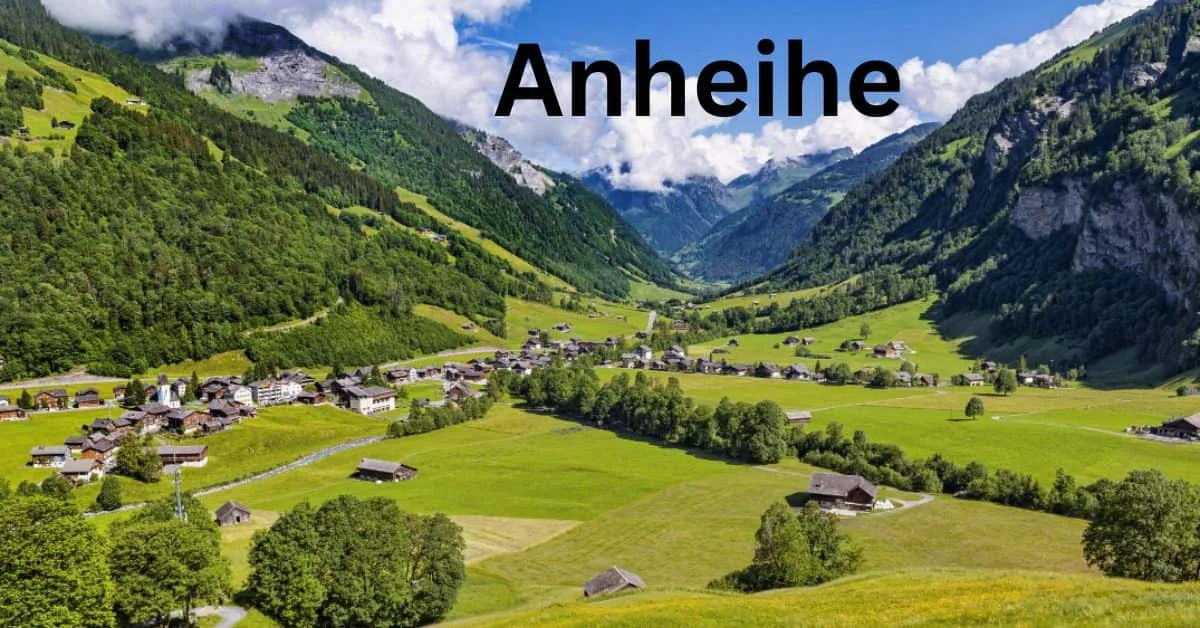Anheihe, though lesser known on the global stage, holds a significant place in the tapestry of Chinese history and modern development. Nestled in the northeast of China, this city is a testament to both China’s rich cultural legacy and its ambitions for the future. With its unique position along the Sino-Russian border, Anheihe has emerged as an important hub for cross-border trade and international cooperation, all while maintaining its charm as a city with deep historical roots.
Geographical Significance
Anheihe is located in the Heilongjiang Province, a region that forms the northeastern frontier of China. The city sits along the banks of the Heilongjiang (Amur) River, directly across from the Russian city of Blagoveshchensk. This strategic location makes Anheihe a gateway for trade between China and Russia. Over the years, it has grown to become one of the key border cities facilitating commerce and tourism between the two nations. The contrasting views across the river—the traditional Russian architecture of Blagoveshchensk and the rapidly modernizing skyline of Anheihe—make this location unique in its cultural blend.
Historical Background
Anheihe’s history dates back to ancient times when it served as an important trading post and settlement along the northern trade routes. The Heilongjiang region has long been a melting pot of different cultures and ethnicities, from indigenous tribes to Han Chinese settlers, as well as Russians and other European traders who came through its ports.
During the Qing Dynasty (1644–1912), Anheihe played a crucial role in maintaining the security of China’s northern borders. It was also a base for military expeditions and diplomatic exchanges with Russia. As the tides of history shifted, Anheihe continued to adapt, becoming a symbol of resilience and cross-cultural communication.
In the 20th century, the city witnessed transformations that paralleled China’s broader modernization efforts. As China began to open up to international markets and develop its economy, Anheihe became an important link in the growing relationship between China and Russia, especially after the collapse of the Soviet Union.
Modern Anheihe: A City on the Rise
Today, Anheihe is recognized not only for its historical significance but also as a rapidly growing urban center. The city has undergone significant infrastructure developments, including modern bridges and roads that connect it to Russia. High-rise buildings, modern shopping centers, and international business hubs now dominate the skyline, reflecting its importance as a regional economic engine.
The Anheihe Free Trade Zone, established in recent years, has further bolstered the city’s economic clout, attracting investments in various industries such as manufacturing, agriculture, and technology. The city’s role as a bridge between China and Russia is also evident in its booming cross-border e-commerce platforms, where Russian goods find a ready market in China and vice versa.
Additionally, Anheihe is a popular destination for tourists seeking to experience both Chinese and Russian cultures. The dual-city experience allows visitors to explore Anheihe’s modern Chinese cityscape while also visiting Blagoveshchensk, just a short ferry ride across the river, for a taste of Russian life.
Culture and Traditions
Despite its modernization, Anheihe has managed to preserve much of its traditional culture. The city is home to various ethnic groups, including the Manchu, who have a long-standing presence in the region. Local festivals, traditional arts, and cultural exchanges remain integral to the city’s identity.
The fusion of Chinese and Russian influences is also visible in the local cuisine, art, and daily life. Russian-inspired buildings, food markets selling imported goods, and bilingual signs in both Chinese and Russian reflect the city’s international character. Visitors to Anheihe often find it an ideal location to experience a unique blend of East and West, set against the backdrop of a vibrant and dynamic urban environment.
Challenges and Opportunities
As with any rapidly developing city, Anheihe faces its share of challenges. Environmental concerns, such as pollution and the need for sustainable urban planning, have become increasingly important. Moreover, the city must carefully balance its economic ambitions with the preservation of its rich cultural heritage.
However, the opportunities for growth are immense. With China’s Belt and Road Initiative aiming to enhance connectivity and trade across Asia and Europe, Anheihe is poised to play a central role in fostering greater cooperation between China, Russia, and other neighboring countries.
Conclusion
Anheihe is a city that seamlessly blends the old with the new, the local with the international. Its unique location, historical significance, and modern infrastructure make it a fascinating place for both tourists and businesses. As China continues to open up to the world, Anheihe stands as a shining example of how a border city can thrive in the globalized era while remaining deeply connected to its cultural roots. For those looking to explore a place where history and progress intersect, Anheihe offers an unforgettable experience.
FAQs
Here is a collection of frequently asked questions (FAQs) about Anheihe, a city located on China’s northeastern border:
1. Where is Anheihe located?
Anheihe is located in Heilongjiang Province in northeast China. It is situated along the banks of the Heilongjiang (Amur) River, directly across from the Russian city of Blagoveshchensk.
2. How do I travel to Anheihe?
- By Air: The nearest airport is Heihe Aihui Airport, with flights connecting to major Chinese cities such as Harbin and Beijing.
- By Train: You can take a train from Harbin or other cities within Heilongjiang Province to Heihe.
- By Ferry: If you’re coming from Russia, you can take a ferry across the Heilongjiang River from Blagoveshchensk to Anheihe.
3. What is the significance of Anheihe’s location on the Sino-Russian border?
Anheihe’s location makes it a key hub for cross-border trade, tourism, and cultural exchanges between China and Russia. The city’s proximity to Blagoveshchensk makes it an important center for Sino-Russian cooperation.
4. What are the main attractions in Anheihe?
- Sino-Russian Friendship Bridge: A significant landmark connecting China and Russia.
- Heihe River Park: Offers scenic views of the Heilongjiang River and the Russian city across it.
- Russian Culture Street: A shopping area where visitors can buy Russian goods and experience Russian culture.
- Wudalianchi Scenic Area: Famous for its volcanic landscapes and hot springs, located near Anheihe.
5. What is the climate like in Anheihe?
Anheihe has a cold, temperate climate with distinct seasons. Winters are long and harsh, with heavy snowfall, while summers are relatively short and mild.
6. Can I visit Russia from Anheihe?
Yes, tourists can cross the Heilongjiang River to Blagoveshchensk, Russia, via ferry. You will need the appropriate visa to enter Russia. The short journey offers a unique opportunity to explore both China and Russia in a single trip.
7. What industries drive the economy in Anheihe?
Anheihe’s economy is driven by cross-border trade, agriculture, manufacturing, and tourism. In recent years, the city has also seen growth in e-commerce, especially in cross-border online shopping between China and Russia.
8. Is Anheihe part of the China-Russia Free Trade Zone?
Yes, Anheihe is part of the Free Trade Zone that promotes economic cooperation between China and Russia. The zone encourages trade, investment, and cultural exchange between the two nations.
9. What languages are spoken in Anheihe?
Mandarin Chinese is the official language, but due to the city’s proximity to Russia, Russian is also commonly spoken, especially in trade and tourism sectors.
10. What cultural influences can be seen in Anheihe?
Anheihe’s culture is a blend of Chinese and Russian influences. The city has many Russian-inspired buildings, bilingual signs, and shops selling Russian goods. You can also experience a mix of Chinese and Russian cuisine and traditions in the city.
11. What is the best time to visit Anheihe?
The best time to visit Anheihe is during the late spring and early autumn (May to September), when the weather is more temperate. Winters are very cold, but some travelers may enjoy visiting during this time to experience the unique winter landscapes and ice festivals.
12. Are there any special events or festivals in Anheihe?
Yes, Anheihe celebrates both Chinese and Russian festivals. Some key events include:
- Chinese Spring Festival (Chinese New Year): A major celebration with fireworks, cultural performances, and feasts.
- Sino-Russian Cultural Exchange Festivals: Events promoting the cultural exchange between the two nations.
13. What are the accommodations like in Anheihe?
Anheihe offers a range of accommodations, from budget hotels to modern international-standard hotels. There are also some guesthouses that provide a more local experience.
14. Is Anheihe safe for tourists?
Yes, Anheihe is generally considered a safe city for tourists. However, as with any travel destination, it’s always wise to take standard precautions, such as securing your belongings and being aware of your surroundings.
15. What local dishes should I try in Anheihe?
Anheihe offers a fusion of Chinese and Russian cuisine. Some popular dishes include:
- Dumplings (Jiaozi): A staple in northern Chinese cuisine.
- Borscht: A Russian beetroot soup commonly found in local restaurants.
- Siberian pastries: Russian-style baked goods that reflect the city’s blend of cultures.
16. How can I exchange currency in Anheihe?
Currency exchange services are available at banks and some hotels in Anheihe. The local currency is the Chinese Yuan (CNY), but Russian Rubles (RUB) can also be exchanged easily due to the city’s proximity to Russia.
17. What should I bring when visiting Anheihe in winter?
If you’re visiting Anheihe in winter, be sure to bring heavy winter clothing, including thermal layers, a warm coat, gloves, and boots. Temperatures can drop significantly below freezing, and there is often heavy snowfall.
18. How long should I plan to stay in Anheihe?
A 2-3 day visit is usually enough to explore the main sights and experience the culture of Anheihe. However, if you plan to travel to nearby areas, such as Blagoveshchensk or the Wudalianchi Scenic Area, you may want to extend your stay to 4-5 days.
19. Are there any visa requirements for visiting Anheihe?
Visitors to China, including Anheihe, typically need a Chinese visa, which can be obtained from Chinese embassies and consulates. If you plan to cross into Russia, you will also need a Russian visa.











